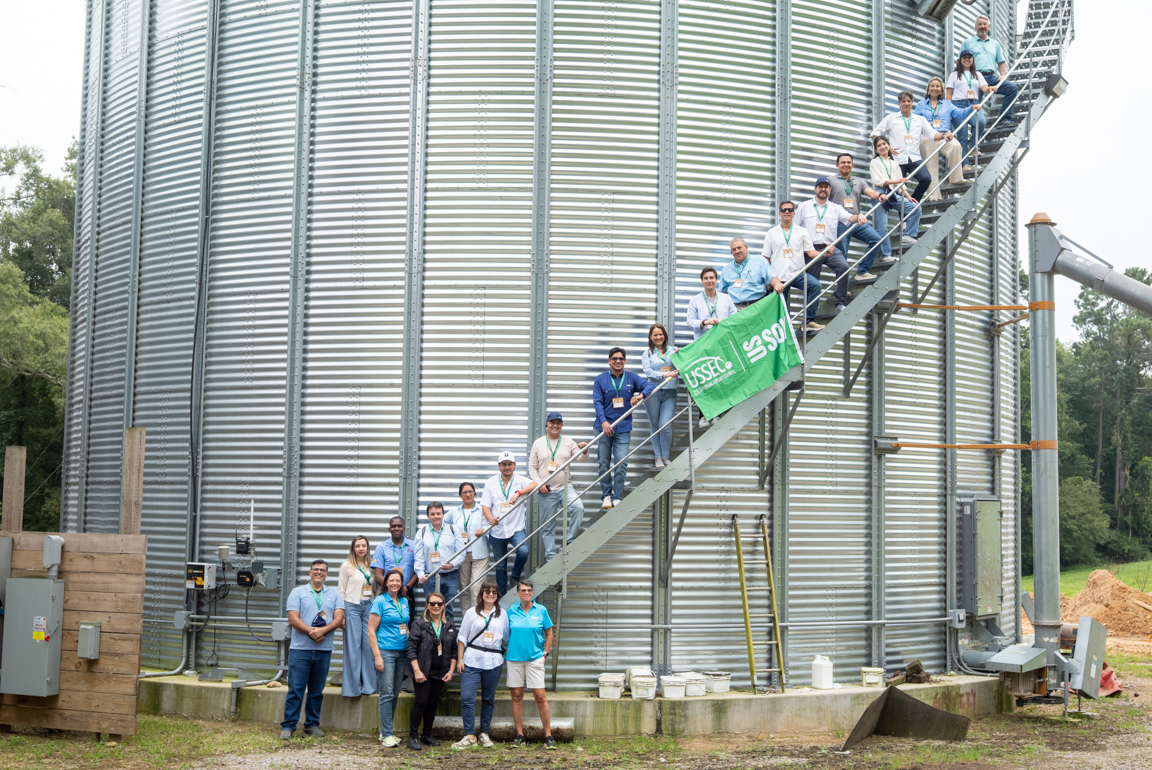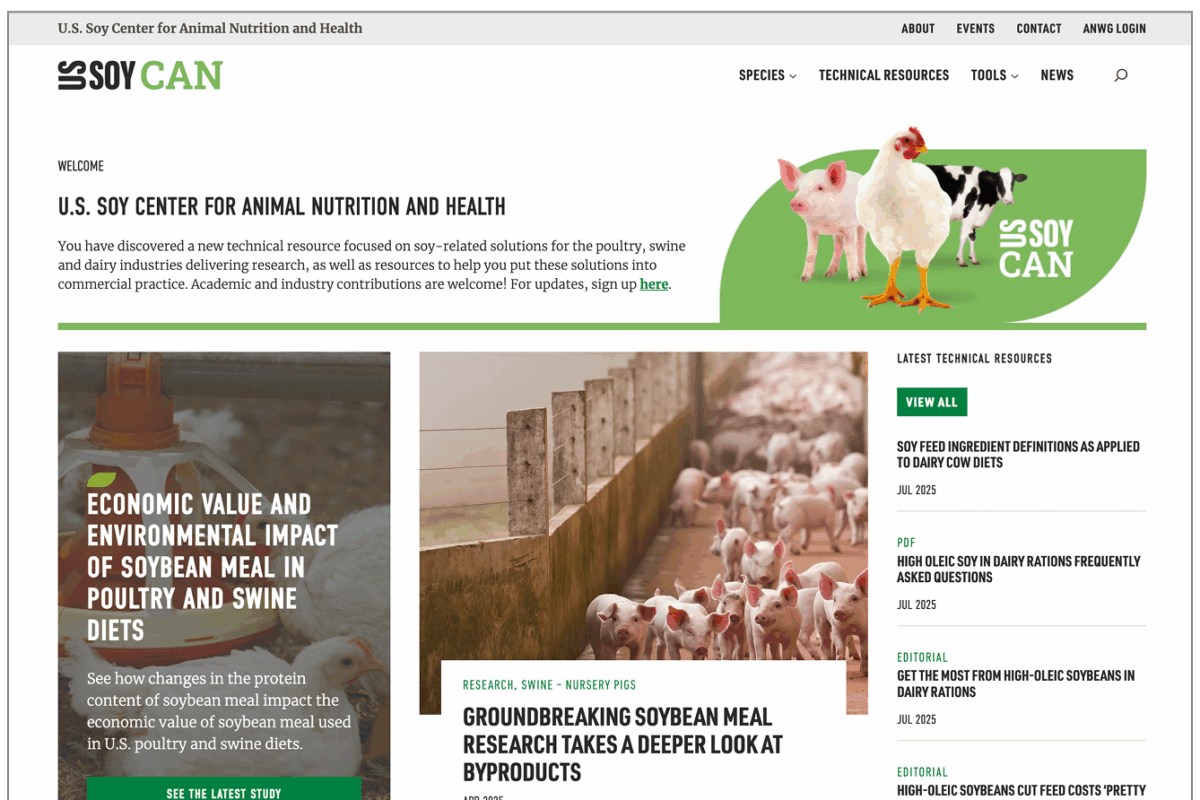Soyfoods Bring Endless Opportunities to the Table

The numbers are impressive. You’ll find soybeans growing on over 80 million acres of U.S. farmland, which makes this versatile crop the second largest in the country. Since April is National Soyfoods Month, what better time could there be to remind ourselves of all the benefits consumers get from soybeans — and the benefits farmers get from sharing soy facts with the world.
Let’s start with the health benefits. While the health effects of soyfoods have been rigorously investigated for 30 years, researchers are continually gaining new insights into health outcomes associated with soy.
Impact on Health
A large study published in 2022 involving nearly 100,000 middle-aged men and women in China found high soy intake was associated with a reduced amount of total cardiovascular events, like stroke and heart attack and all-cause mortality.1
Regularly eating soy protein may be beneficial for cholesterol levels, making it a heart-healthy food, according to research published in the Journal of the American Heart Association. The FDA also authorized a health claim about soy protein, stating that in diets that are low in saturated fat and cholesterol, regular consumption of 25 grams of soy protein a day has been associated with reducing cardiovascular disease risk.
Your soy checkoff and a group of food industry experts at Soy Nutrition Institute Global are currently looking into the effect of soybean oil on body fat. Preliminary evidence shows that oils high in polyunsaturated fat, such as soybean oil, cause less fat accumulation in the liver and other organs in comparison to oils high in saturated fat.2 Reducing liver fat reduces the risk of liver disease and its severe health consequences.
SNI Global, along with a resource for dietitians called Soy Connection, is focused on sharing the results of studies like these, helping food and health experts understand the benefits of soy. By partnering with these organizations, the soy checkoff helps prove the value of soyfoods to the people and companies who can impact demand for your product, enhancing its reputation.
Health Improvements
In addition to reduced risks, other studies show soy’s potential to provide benefits.
A recent study focused on older men and women in the U.S. found that consuming soy nuts (roasted soybeans) daily for 16 weeks increased blood flow in the brain in four different areas, which suggests soy might improve cognitive function.3
One of the more exciting areas currently being researched is the effect of isoflavones found in soy on skin health. This area has been investigated for about a decade with promising results.4,5
The current study underway in California, funded by the soy checkoff and SNI Global, has the potential to make those results into something more concrete. From a public health perspective, reducing wrinkles may not be high on the priority list, but many people care about the condition and appearance of their skin. Even if some may choose to eat soy primarily to improve their skin, they will likely reap the other health benefits soyfoods may provide.
Nutrition
Of course, soy’s primary role in the diet is nutrition. On that front, soy protein provides:
- All the essential amino acids in the amounts needed by the body to make protein.
- Additional nutrients, such as folate, potassium and fiber.
- Soy protein is the only plant protein comparable in quality to animal protein.
Speaking of animal protein, U.S. soybean producers provide the animal agriculture industry with a consistent and reliable source of protein for feed — so soy contributes to tasty meat-based dishes as well.
Your checkoff dollars are hard at work, ensuring that experts in health and food learn the benefits of soy. Because the more they understand, the more soy they’ll want; and the more opportunities U.S. soybean farmers will have to continue to supply not only the nation but the world with quality soybean products. That’s good news for consumers, soybean farmers and U.S. agriculture.
1 Xue T, Wen J, Wan Q, Qin G, Yan L, Wang G, Qin Y, Luo Z, Tang X, Huo Y, et al. Association of soy food with cardiovascular outcomes and all-cause mortality in a Chinese population: a nationwide prospective cohort study. Eur J Nutr 2022.
2 Rosqvist F, Iggman D, Kullberg J, Cedernaes J, Johansson HE, Larsson A, Johansson L, Ahlstrom H, Arner P, Dahlman I, et al. Overfeeding polyunsaturated and saturated fat causes distinct effects on liver and visceral fat accumulation in humans. Diabetes 2014;63:2356-68.
3 Kleinloog JPD, Tischmann L, Mensink RP, Adam TC, Joris PJ. Longer-term soy nut consumption improves cerebral blood flow and psychomotor speed: results of a randomized, controlled crossover trial in older men and women. Am J Clin Nutr 2021.
4 Draelos ZD, Blair R, Tabor A. Oral soy supplementation and dermatology. Cosmetic Dermatology 2007;20:202-4.
5 Jenkins G, Wainwright LJ, Holland R, Barrett KE, Casey J. Wrinkle reduction in post-menopausal women consuming a novel oral supplement: a double-blind placebo-controlled randomized study. Int J Cosmet Sci 2014;36:22-31.



